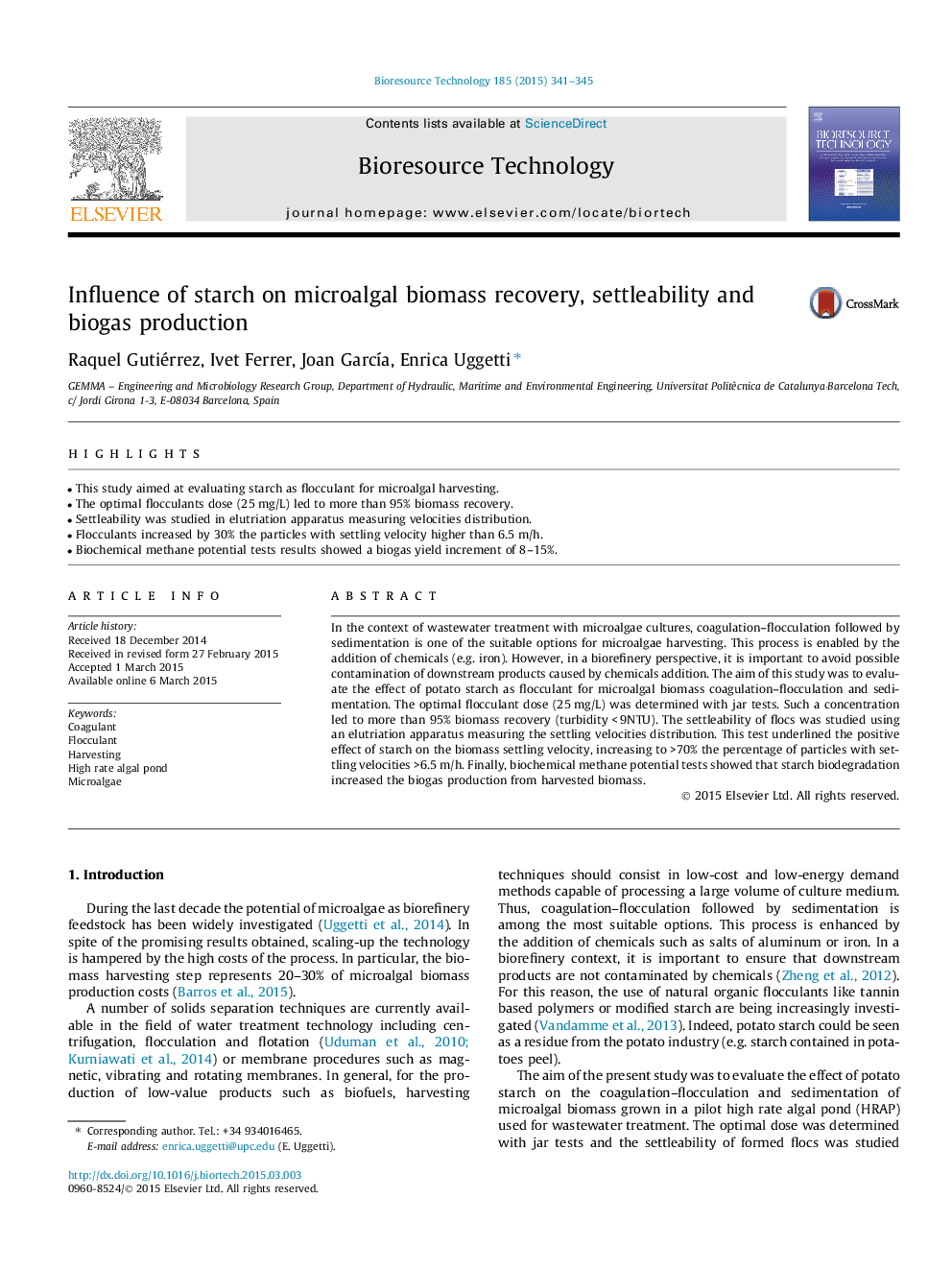| Article ID | Journal | Published Year | Pages | File Type |
|---|---|---|---|---|
| 679825 | Bioresource Technology | 2015 | 5 Pages |
•This study aimed at evaluating starch as flocculant for microalgal harvesting.•The optimal flocculants dose (25 mg/L) led to more than 95% biomass recovery.•Settleability was studied in elutriation apparatus measuring velocities distribution.•Flocculants increased by 30% the particles with settling velocity higher than 6.5 m/h.•Biochemical methane potential tests results showed a biogas yield increment of 8–15%.
In the context of wastewater treatment with microalgae cultures, coagulation–flocculation followed by sedimentation is one of the suitable options for microalgae harvesting. This process is enabled by the addition of chemicals (e.g. iron). However, in a biorefinery perspective, it is important to avoid possible contamination of downstream products caused by chemicals addition. The aim of this study was to evaluate the effect of potato starch as flocculant for microalgal biomass coagulation–flocculation and sedimentation. The optimal flocculant dose (25 mg/L) was determined with jar tests. Such a concentration led to more than 95% biomass recovery (turbidity < 9NTU). The settleability of flocs was studied using an elutriation apparatus measuring the settling velocities distribution. This test underlined the positive effect of starch on the biomass settling velocity, increasing to >70% the percentage of particles with settling velocities >6.5 m/h. Finally, biochemical methane potential tests showed that starch biodegradation increased the biogas production from harvested biomass.
